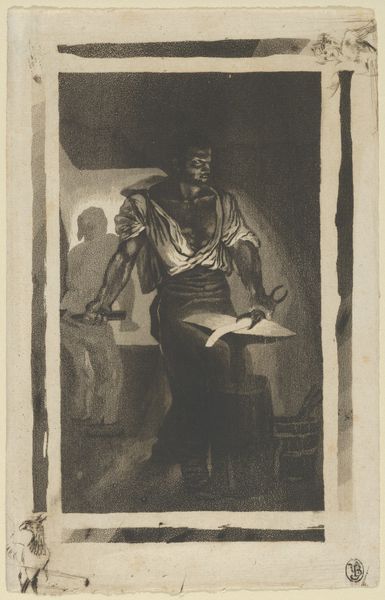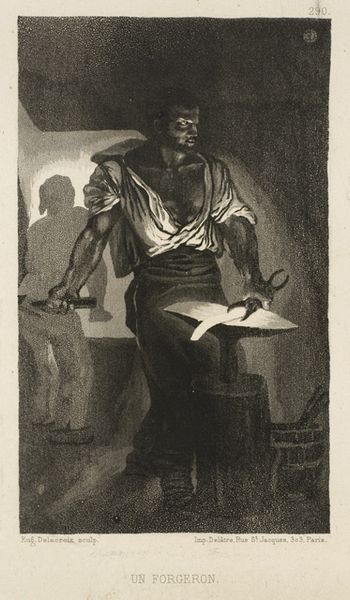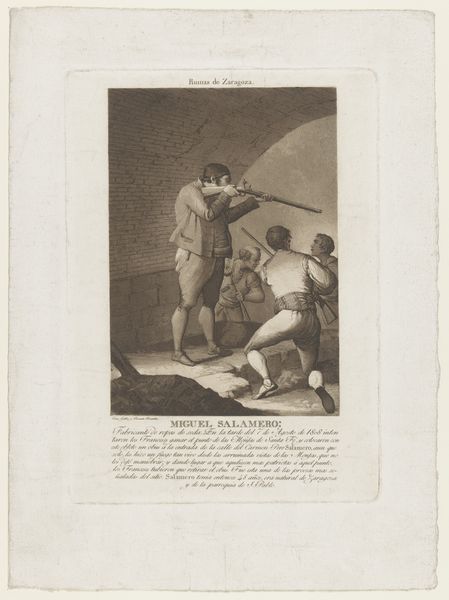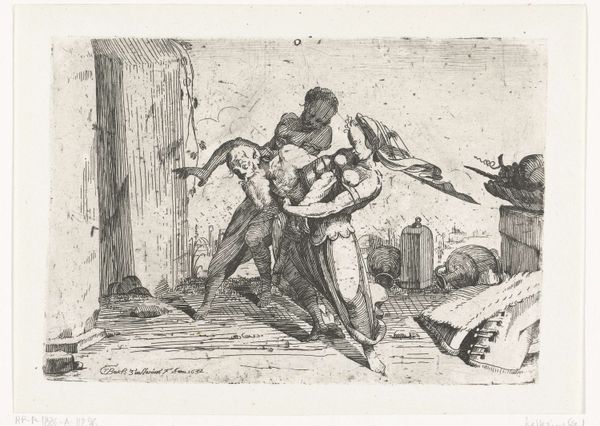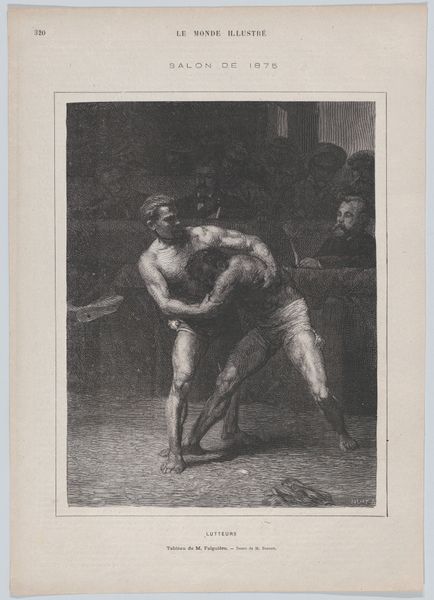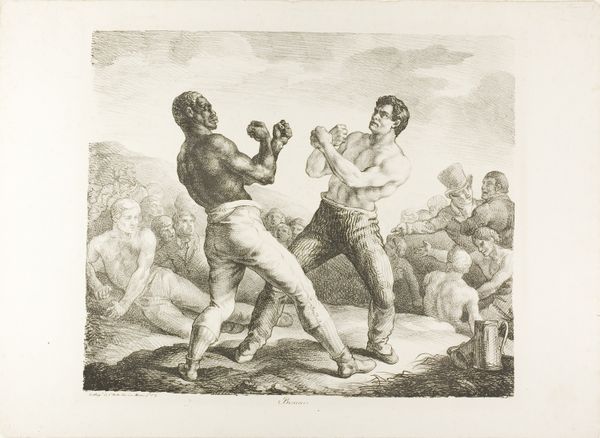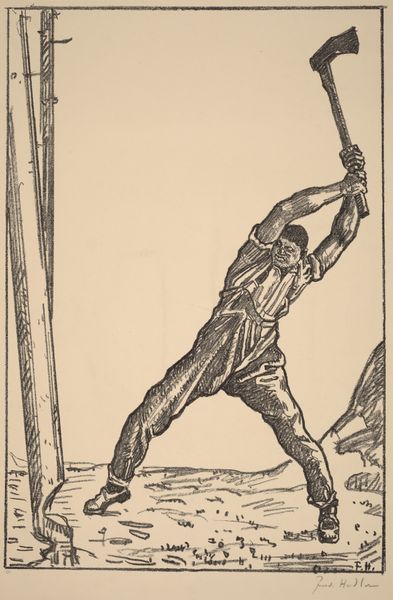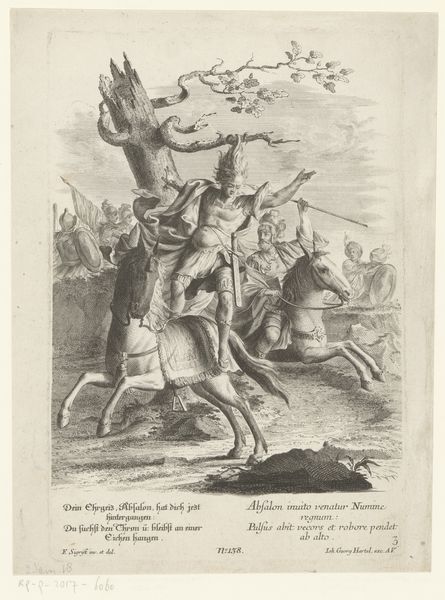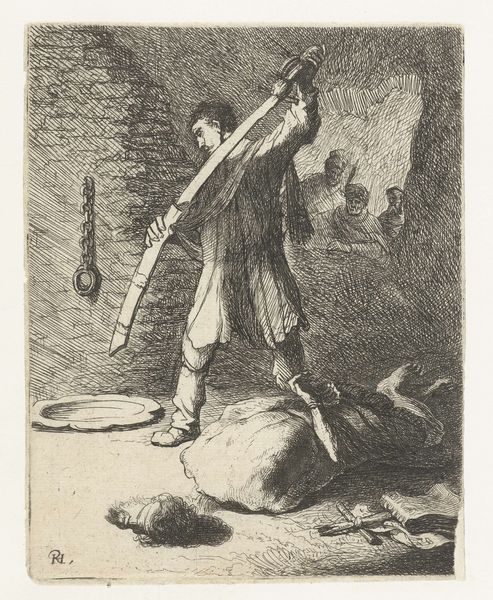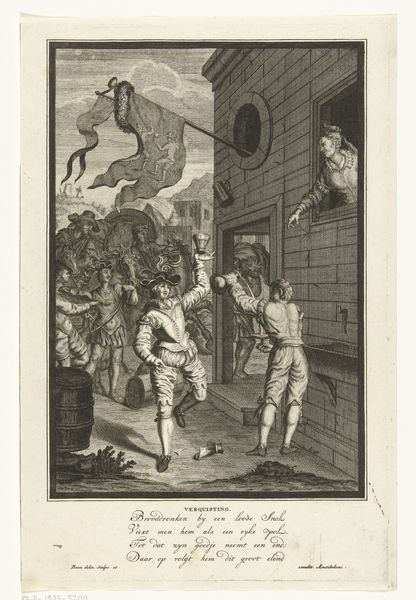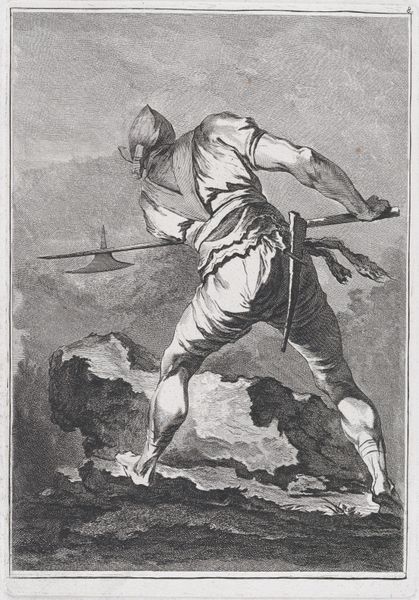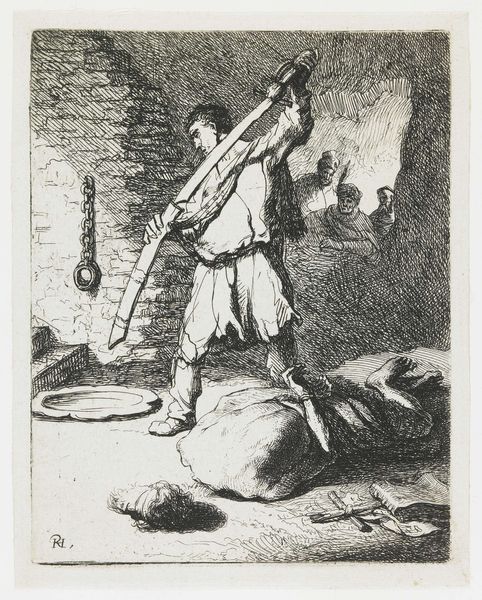
Dimensions: 470 × 305 mm (image); 567 × 455 mm (sheet)
Copyright: Public Domain
Editor: Paul Signac's lithograph, "The Wreckers," from 1896… It’s surprisingly gritty for an Impressionist, isn't it? The scene feels charged with this… almost violent energy. What's your interpretation of this piece, given the context of its time? Curator: Well, let’s consider the public role of art at the fin de siècle. Signac, though associated with Impressionism, was deeply engaged with anarchist politics. How might this inform the print? Is this image just depicting physical labor, or is Signac commenting on the socio-political landscape of France? Editor: So, the 'wreckers' aren’t just tearing down a building? They are making a statement about the political and social turmoil of the time? I never thought of Impressionism as a breeding ground for political statements, I mostly thought of them rendering light effects… Curator: It’s a simplification to view Impressionism as solely about capturing fleeting moments. Many artists of that era, including Signac, saw art as a tool for social commentary. How do you read the composition? The figures are dominant, almost heroic in their scale, while the background fades away… Editor: Right! The facelessness adds to that. It de-emphasizes the individual and promotes a message. Perhaps of the working class at large. The sunburst looks destructive too. Was the lithograph form a deliberate choice? Curator: Absolutely. Prints, particularly lithographs, allowed for wider distribution, making art more accessible to the masses. In terms of imagery, are we to see in their faces the symbolic representations of an idea, an urge for total social transformation? And who are “the wreckers?” The people who destroy, but also those who will build a new social order, an idealized vision. Editor: I’m starting to see how the medium and message work together here! The 'violence' isn't just visual—it’s ideological too. That's really cool! I will now think of political agency when observing Impressionist artworks. Curator: Precisely. Analyzing the social context provides an intriguing dimension. It is crucial to look beyond aesthetic qualities of art and appreciate its active role within our cultural institutions.
Comments
No comments
Be the first to comment and join the conversation on the ultimate creative platform.
